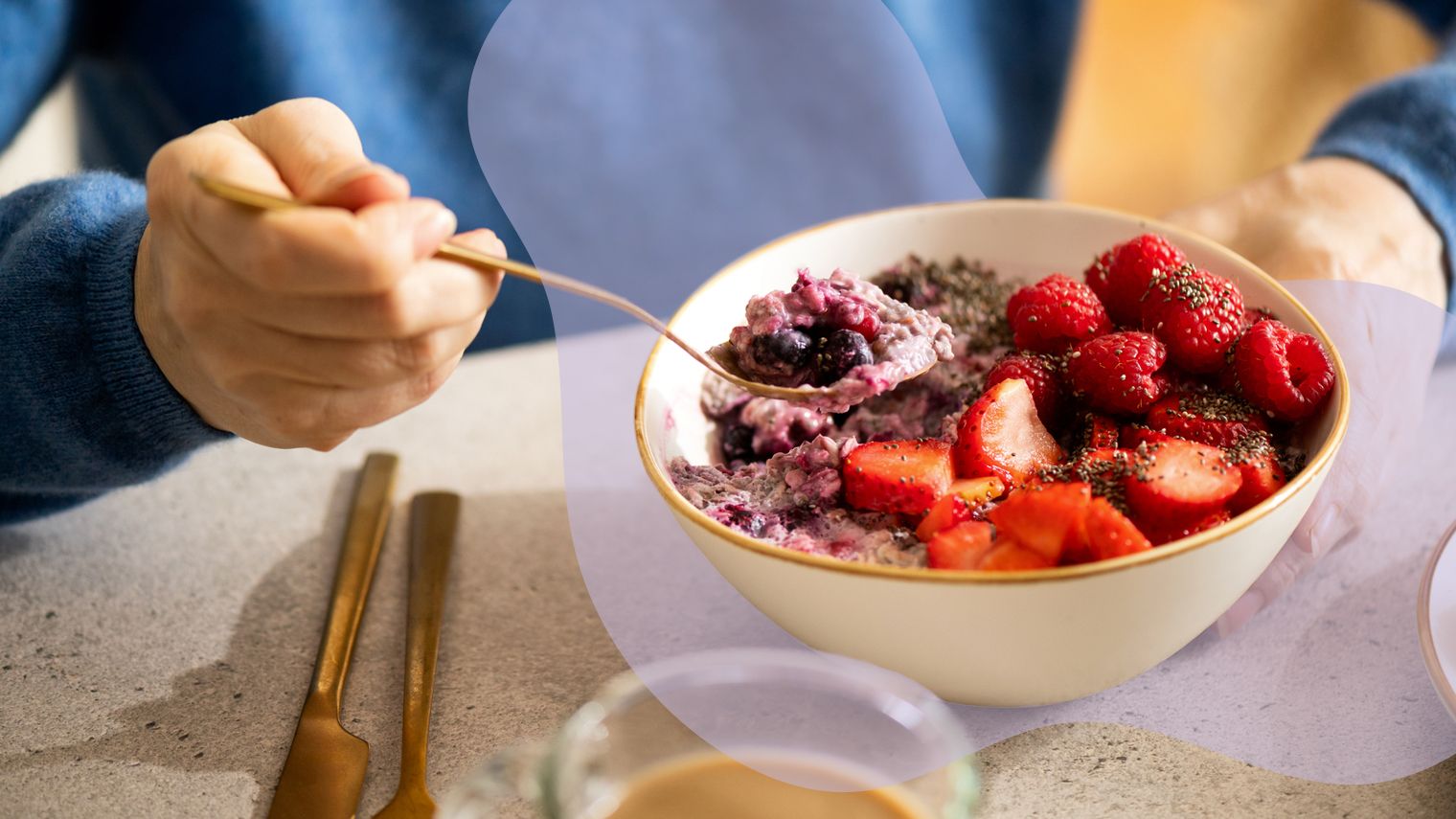5 IBD-Friendly Ways to Add More Fiber to Your Diet
May 23, 2022
Content created for the Bezzy community and sponsored by our partners. Learn More

Pixel Stories/Stocksy United
These tips can help you get the benefits of fiber without worsening your Crohn’s disease or ulcerative colitis (UC) symptoms.
For most people, fiber offers a multitude of health benefits. Fiber helps us stay full, which in turn helps regulate blood sugar. It may also help lower cholesterol and reduce our risk of developing:
- heart disease
- diabetes
- diverticular disease
- constipation
- colorectal cancer
No wonder it’s so commonly recommended that “everyone” should increase their fiber intake.
However, that can be a scary thought for those of us with inflammatory bowel disease (IBD). Fiber — which is an indigestible carbohydrate — can worsen bowel symptoms for people with Crohn’s disease or UC, especially during a flare.
For example, if your gut is already inflamed, the fiber load (roughage) in a big salad could lead to gas, bloating, abdominal pain, and diarrhea.
Additionally, people with strictures (narrowing) in their intestines, and sometimes those with ostomies, need to be careful with fiber. Outside of these specific situations, however, gently increasing fiber intake can actually be very beneficial for people with IBD.


The benefits of fiber for IBD
Fiber may actually improve gut health for people whose IBD is in remission.
In a 2021 study, people with UC that’s in remission or mildly active followed a low fat, high fiber diet for 4 weeks. The study found that participants had significant improvements in clinical symptoms and quality of life. They also had lower levels of markers of inflammation and healthier gut microbiomes.
And, of course, all the other health benefits that people get from fiber apply to us as well.
Easing fiber into your diet
Some people with IBD may be able to easily tolerate raw fiber, such as leafy greens and other raw vegetables, raw fruits, nuts, and seeds. Others may need to gradually build their tolerance to prevent symptoms.
If that’s the case for you, start with the following IBD-friendly ways to ease more fiber into your diet if your physician or dietitian gives you a green light. The last two tips may be more troublesome, especially for those with strictures, so take a step back if you find your symptoms worsening.
1. Cook and peel your fruits and veggies
Fruits and vegetables are very nutritious, but in their raw form, they can be difficult to digest. By peeling the skin and cooking the vegetables (and sometimes fruit), you may be able to tolerate them without any symptoms.
For example, eating a raw apple may be difficult, but peeling the apples and making homemade applesauce may be easier on your gut. You can puree the applesauce or leave it chunky, depending on your preference.
As your tolerance for fiber or your inflammation improves, you may choose to cook the applesauce with the skin left on the apples. Of course, apples are only one example, and they’re not the best choice if you’re following a low FODMAP diet.
Another example is steaming vegetables, such as carrots, spinach, and turnips, instead of eating them raw. Steaming softens the vegetables and increases their water content so they are easier to digest.
A well-cooked stir fry is another good way to cook your vegetables. You can also try roasting vegetables, though this is not as gentle on the gut as steamed vegetables.
2. Make smoothies
Smoothies are a great way to take in blended fruits and vegetables, with the blender doing much of the work of breaking down the fiber for you.
One of my favorite smoothie recipes is frozen banana, frozen strawberries, frozen blueberries, almond milk, and collagen (for protein). You may choose to add an additional source of fiber, such as flaxseeds or chia seeds, as your tolerance allows.
3. Eat more soups and purees
Pureed soups are a delicious way to take in a whole bunch of vegetables without any digestive discomfort. Two of my favorite soups that I love eating, especially during a flare, are butternut squash soup and ginger carrot soup.
4. Try soaking your oats overnight before cooking
If you like oatmeal but have difficulty tolerating it, try soaking steel cut oats overnight, then cooking the oats the next morning. This trick helps break down the starches, making it easier to digest.
Overnight oats are also delicious. You can soak your oats overnight in almond milk or any other liquid you like, and top them with banana slices and your favorite nut butter.
5. Take fiber supplements
If you have difficulty eating or preparing fiber-rich foods or would like to increase your fiber intake, you could consider trying a fiber supplement. You may have to experiment to determine which fiber supplement you tolerate best. Your gastroenterologist or primary care doctor may also have some suggestions.
The takeaway
The more we learn about fiber, the more it seems to be beneficial for many aspects of our health. It can certainly be difficult for those of us with IBD to tolerate a high fiber diet, given our sensitive guts, so be sure to talk with your doctor before upping your fiber intake, especially if you have had surgery for your IBD, if you have a stricture, or if you have active inflammation.
Medically reviewed on May 23, 2022
10 Sources


Like the story? React, bookmark, or share below:
Have thoughts or suggestions about this article? Email us at article-feedback@bezzy.com.
About the author